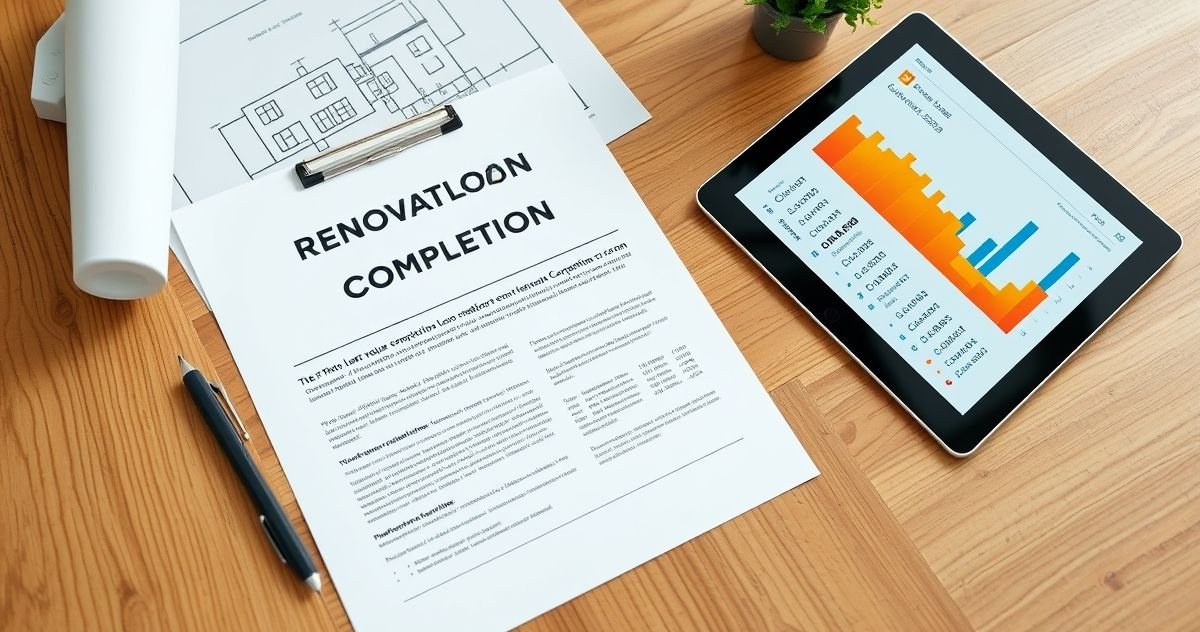When you finance a home purchase combined with improvements through loans such as the FHA 203(k) loan or Fannie Mae HomeStyle Renovation Loan, funds are not released all at once. Instead, lenders distribute payments in stages based on renovation milestones, with the final payment contingent on a renovation loan completion report.
This report is a professional assessment typically performed by a licensed appraiser or certified home inspector approved by your lender. It confirms that all agreed-upon renovation work has been completed according to the original plans and local building codes. The report also verifies that the property’s value has increased to the projected “as-completed” appraisal, ensuring the lender’s investment remains secure.
Lenders require this report primarily to reduce risk by confirming the collateral’s condition and value after renovation. It is a mandatory step in government-backed renovation loans, like FHA 203(k), to comply with federal guidelines and release the remaining loan funds.
The completion report usually includes detailed verification of finished work, before-and-after photos, notes on any minor outstanding items, and the professional’s official sign-off. If any issues or deviations from approved plans exist, they must be resolved before funds are disbursed.
The process typically unfolds as follows: once renovations are finished, you or your contractor notify the lender to schedule the inspection. The appraiser or inspector visits the property, documents the completed renovations, and submits the report directly to the lender. Upon approval, the lender releases the final loan disbursement, often paid directly to your contractor.
To avoid delays, ensure contractors complete all work per approved plans, communicate clearly about the report’s importance for final payment, and maintain detailed renovation records. Unauthorized changes to plans can cause reappraisals or delay final fund release.
For more details on renovation loans and financing options, you can visit our HomeStyle Renovation Loan and 203(k) Streamline Loan pages. Also, see the Home Renovation Financing glossary article for broader insights.
Understanding the renovation loan completion report helps homeowners and contractors navigate the critical final step in the renovation loan process, ensuring timely project completion and loan funding.
Additional authoritative information is available at the U.S. Department of Housing and Urban Development (HUD) site, which governs FHA renovation loan guidelines.



